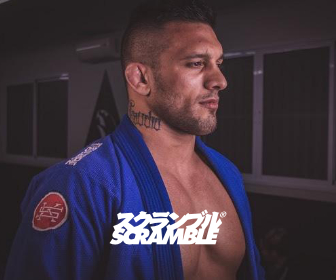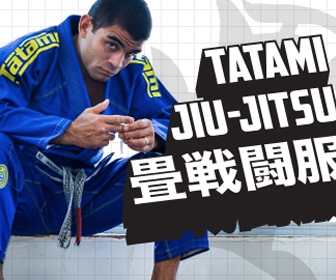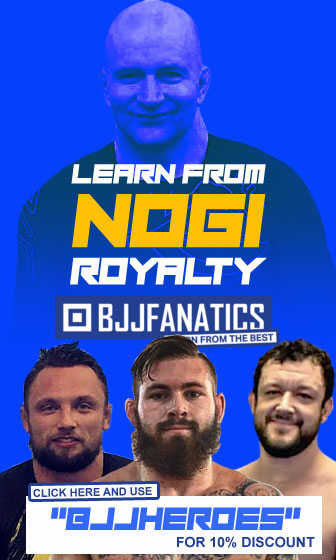When it comes to jiu-jitsu few people are more knowledgeable than Robert Drysdale, both on the application of this martial art in combat and the “ancient” history of this grappling style in modern discourse – particularly its inception into Brazilian culture.
As we had referenced in last month’s interview (check here) with the Zenith Jiu-Jitsu team leader,Robert Drysdale is often revered as one of the brightest American jiu-jitsu athletes of all time, a pioneer of jiu-jitsu in that regard with IBJJF CBJJO, and ADCC World titles, the three biggest jiu-jitsu promotions of his era. Also on Drysdale’s extensive list of achievements is his work as a team leader and developer of athletes through his Las Vegas gym.
The other, lesser-known, facet of Robert is his work as a jiu-jitsu history investigator, a task he set for himself a couple of years ago. Drysdale’s research has led his views to merge with those of Robert Pedreira – a published BJJ history author, and against the traditional discourse laid out by the Gracie family from the 1930s up to today. The story told by most BJJ coaches on how Carlos Gracie learned jiu-jitsu from Mitsuyo Maeda, and then transferred that information to Helio Gracie who would go on to develop the art himself and discover of leverage.
There are evident holes in that storyline, but Drysdale’s intention is not to start a crusade against the Gracies and what they have done for the sport. What has driven him to research and publish his findings comes from a different mindset altogether: “It’s more out of recording history as accurately as the sources allow, that’s all that really matters. Personally, I have no emotional attachment to whatever comes from the result of any discovery.” Robert referenced when inquired on the matter.
Given the massive research set forth by Robert and the immeasurable value it has for the grappling community, we came back to the former ADCC open weight champion this month to learn more about his findings. This time focusing more on Maeda and his work during the early stages of his martial art in Brazil.
– Most people see Maeda as one of Jigoro Kano’s top students who happened to relocate to Brazil and create a separate (in modern history’s eyes) lineage to that of judo. Is there any evidence to support the claim that Maeda was a leading student of Kano?
R.D.: There is a lot of mythology surrounding Maeda, for example, he was never a student of Jigoro Kano. For the documentary, I remember speaking to a member of the Japanese community who knew well one of Maeda’s closest friends who had tales of him liking to gamble, drink and live the good life (on top of liking to dress nicely). It doesn’t say much in regards to the history of BJJ and its development but it is interesting to paint the character. He was a normal guy who enjoyed life like everyone else. I really feel, from what is available, that Maeda wasn’t any different from your BJJ competitor today, in the sense where he was just trying to make a living like everyone else from something he liked and was good at. But he wasn’t an idealistic missionary spreading the gospel of Jiu-Jitsu or Judo. He was an immigrant who left Japan at a time where Japan was not as economically developed as it is today, trying to make a living and seek a better life, much like other immigrants. Teaching and fighting was an expression of this economic need. It just happened to be one that would set many other events in motion in terms of the history of Martial Arts in Brazil. I also get the impression that he had an adventurous nature.
– Traditional history tells us Maeda had two periods in Belem do Pará, where he taught judo/jiu-jitsu, the birthplace of modern-day BJJ. What were the dates of those two periods, according to your research and where did he teach?
R.D.: It is not clear to me how much Maeda traveled during his stay in Brazil and how much he taught. We know that he made his official appearance on September 25th of 1914 in Sao Paulo (not November 14th in Porto Alegre as is widely circulated on the internet) and possibly as early as the 17th of July in Sao Paulo (but this source can’t be confirmed). He arrives in Belem sometime in October 1915 after traveling much of the country. In September of that year, there was even a local from the city of Recife, called Bianor, who claimed to have learned from Maeda, just to give you an idea of how Brazilians would claim credibility over association with a Japanese like Maeda. While in Belem, it is unclear to me how much he traveled and how much he taught. We know that he made his last international fight/appearance in Cuba in 1921 in a series of encounters against the Spaniard Pablo Alvarez known as “Español Incognito.” There is a book coming out next year by Robert Pedreira called “Craze volume 3” which will give a lot of insight into Maeda’s life in Brazil. So we should all be looking forward to that. In the meantime, this link (click here) helps people better understand some of the mythology surrounding Maeda.
– Considering that the ranking system was very different back then from how it works today, how would you quantify who was promoted by Maeda in Brazil, and what exactly were they promoted to?
R.D.: I wrote an article a while back for GTR that talked about this. The article discusses 5 Brazilians promoted to a rank of “primeiro galão.” Of course what the journalist meant by that is unclear, since “primeiro” means “first” and “galão” is a form of military rank. The term “black-belt” would not carry the same weight it carries today. The uncertainty stems from how Judokas count their Kyu promotions (in today’s lingo “white to brown”) from last to first, making the “brown belt” the “first Kyu” which is one possibility and in crescent order after the first Shodan (1st degree Black Belt). In other words, these 5 Brazilians were a) either really close to today’s equivalent to Black-Belt rank, b) ranked to 1st degree Black-Belt (as is the custom in Judo) or c) Maeda created his own grading hierarchy. The only certain issue is that Maeda promoted these men and they had a certain level of mastery of what Maeda was teaching.
– Do we have much information on what these 5 Brazilian students did with their knowledge after the promotion? Did they go out of their way to teach what they had learned? If so, is there any evidence of their alternative lineages in Brazil?
R.D.: Of these five (Waldemar Lopes, Raphael Gomes, Jacyntho Ferro, Dr. Matheus Pereira, and Guilherme de la Rocque) only Ferro was teaching as far as the available sources can tell. Everything we have from that period seems to indicate that Ferro was Maeda’s right-hand man, and was doing most of the teaching in fact and that he was responsible for teaching “Oscar Gracie” which is a topic for another time.
– Jacyntho Ferro seems to be the likely source of Carlos Gracie’s grappling knowledge. Did he have an academy in Rio?
R.D.: There is no evidence currently available of Ferro having taught anywhere outside of Maeda’s club in Belem. He was an acclaimed athlete even prior to his fighting experience under Maeda, a weight lifter and cyclist amongst other athletic endeavors. His death in 1929 was remembered by the press in a place as far as Rio de Janeiro however. This gives you a scope of his popularity. In fact, the local Amazonian press referred to him as Maeda’s favorite student (“aluno predileto”) as far as 1978.
– How long do you believe Carlos trained with Ferro?
R.D.: That is impossible to say given what we know. Anything I said would be a wild guess.















